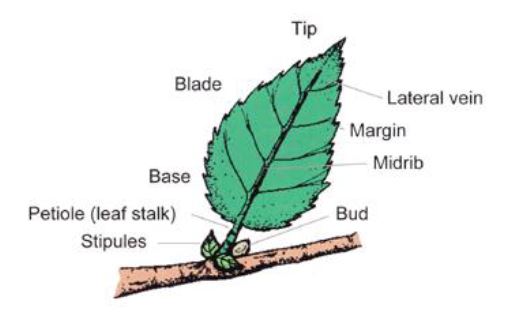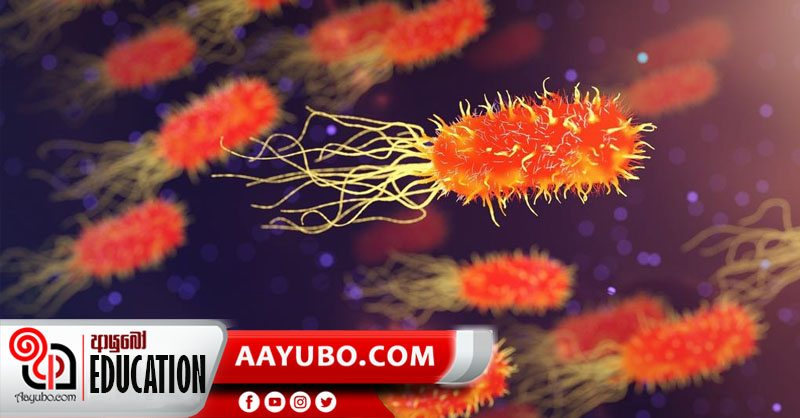Grade 8 Science: Diversity and Functions of Plant Parts

There is a vast diversity among the plants in our environment and several adaptations in order to thrive in various environments can be noted among them.
A plant consists of a shoot system and a root system. The shoot system includes the stem, leaves, fruits and flowers. The tap root and the lateral roots belong to the root system. However, due to the diversity, the above parts don’t appear as usual in every plant.
Diversity and functions of plant leaves
Photosynthesis
Leaves can be termed as the most important aspect in a plant and its major role is Photosynthesis where chlorophyll in green plants are used to produce food in plants with the help of water, carbon dioxide and solar energy.
The leaves are naturally adapted for Photosynthesis. This can be observed through the flat and thin leaves that easily get exposed to sun light and allow it to penetrate completely into the tissue. Moreover, leaves of plants like Aloe Vera, Yellow Oleander and Temple flower that grow mostly in dry, arid environments with adverse conditions are normally thicker and they have more flesh.
Following figure showcases the parts of a leaf.
Diversity has made the above parts to differ greatly when different plants are considered. This happens as they adapt for their main role of producing food and other functions. The blades of the leaves of different plants considered take different shapes. (Example: Mango and Gotukola). The tips of the leaves too can be curvy, pointed, divided or sharp. (Example: Jack and Bo leaf). The margins can be smooth or serrate in nature. (Example: Rose and Temple trees). Moreover, the bases and petiole of the leaves also differ greatly. (Example: Lotus and Shoe flower).
Leaf arrangement in plants shows the pattern in which the leaves are connected to its stem and it is naturally adapted to make sure that all leaves are exposed to sun light, to support photosynthesis. Some of them are as follows.
> Leaves are located on alternate sides of the stem - Example : Anona / Katu Anoda
> Leaf attachments paired at nodes and in opposite directions – Example : Guava
> Three or more leaves connected at every node on the stem in a rotation /whirl
Example: Rukkaththana
> Leaves are arranged in a spiral along the stem – Example : Kanda
Transpiration
In this process, water evaporates through the stomata of the plant. This helps to transport water to the upper sections of the plant. Transpiration supplies water and minerals the leaves that help in photosynthesis.
In arid environments, we can observe that leaves of plants show adaptations to reduce transpiration in many ways.
Thick, waxy cuticle - Example : Oleander, Temple trees
Leaves reduced to spines – Example : Cactus
Thin leaves – Example : Kasa
Reduced number of leaves – Example : Navahandi
Fleshy leaves – Example : Aloe Vera, Akkapana
Produce new plants through asexual reproduction – Example : Begonia, Akkapana
Diversity and Functions of plant stems
Functions
Support and bear leaves, buds, flowers, fruits, seeds of a plant
Keep the plant upright
Transportation of water and minerals throughout the plant
Stems also show a series of adaptations to perform other functions
Propagative stems produce new living tissues that allow the plants to grow and reproduce.
o Plants reproduced by runners or stolon - Examples : Undupiyaliya, Gotukola, Ambul ambiliya
o Plants reproduced by suckers – Examples : Paddy, Banana, Kalanduru
Storage of food in Aerial stems – Examples : Kithul, Sugar cane
Underground stems store food and help in reproduction. The aerial parts get destroyed in adverse conditions and when the conditions get favorable, new sprouts come out from the underground stems that survived. – Examples : Turmeric, Ginger, Onion, Potato
Photosynthetic stems are green and photosynthetic – Examples : Cactus, Daluk
Climbing stems get attached to a support where they climb up for the efficient absorption of sun light - Examples : Beans, Venival
Diversity and Functions of Plant Roots
Basically, the roots perform the following functions.
- Anchor the plant in the soil.
- Absorb and transport water and minerals.
Plants basically have a tap root and many lateral roots. Adventitious roots are roots that spring up from other parts of the plants.
Some roots perform special functions
Tuberous roots – The roots that are swollen and fleshy owing to the storage of food and these roots thrive under unfavorable conditions. Food is stored in the tap root or the adventitious roots.
o Storage of food in tap roots - Examples : Carrot, Radish, Beet
o Storage of food in adventitious roots - Examples : Sweet potato, Dahlia, Manioc
Prop roots - These are adventitious roots that spring up from the branches of plants. They help the penetration of soil and support the branches.
Examples: Banyan Tree, Rath Kadol
Stilt roots - Adventitious roots that spring from the stem of the plant. These roots grow below the ground and help to support the stem.
Examples: Maha Kadol, Rampa, Vetakeyya
Climbing or Clasping roots - These roots help the stem or the creepers to stay connected / attached to a support or a surface.
Examples: Betel, Pepper
Aerial Roots – These roots supply the moisture to the plant upon the absorption of it from the atmosphere. These roots can be found in Epiphytes.
Examples: Orchids, Vanilla
Respiratory Roots – Upon the absorption of air from the atmosphere, these roots supply the air to the plant.
Examples: Mangrove plants like Soneratia and Maha kadol
Propagative roots – These roots are capable of producing new plants.
Examples: Beli, Guava, Curry leaves
Thus, we can conclude that the functions and the adaptations of plants to thrive in various environmental conditions have led to the tremendous diversity that is found among plants.
by Mekhala Egodawele
Photo source : Internet
6498 Views








Comments